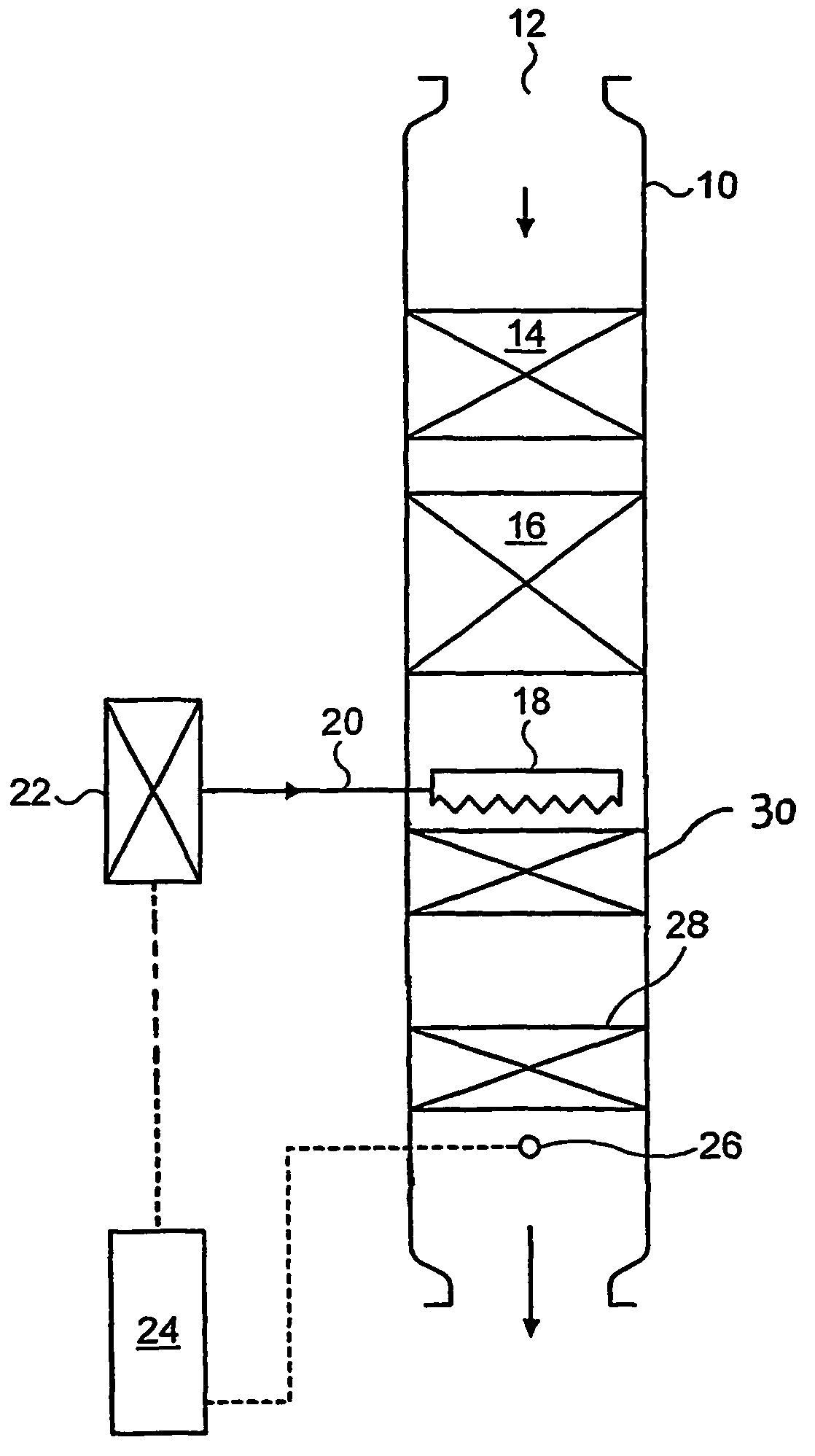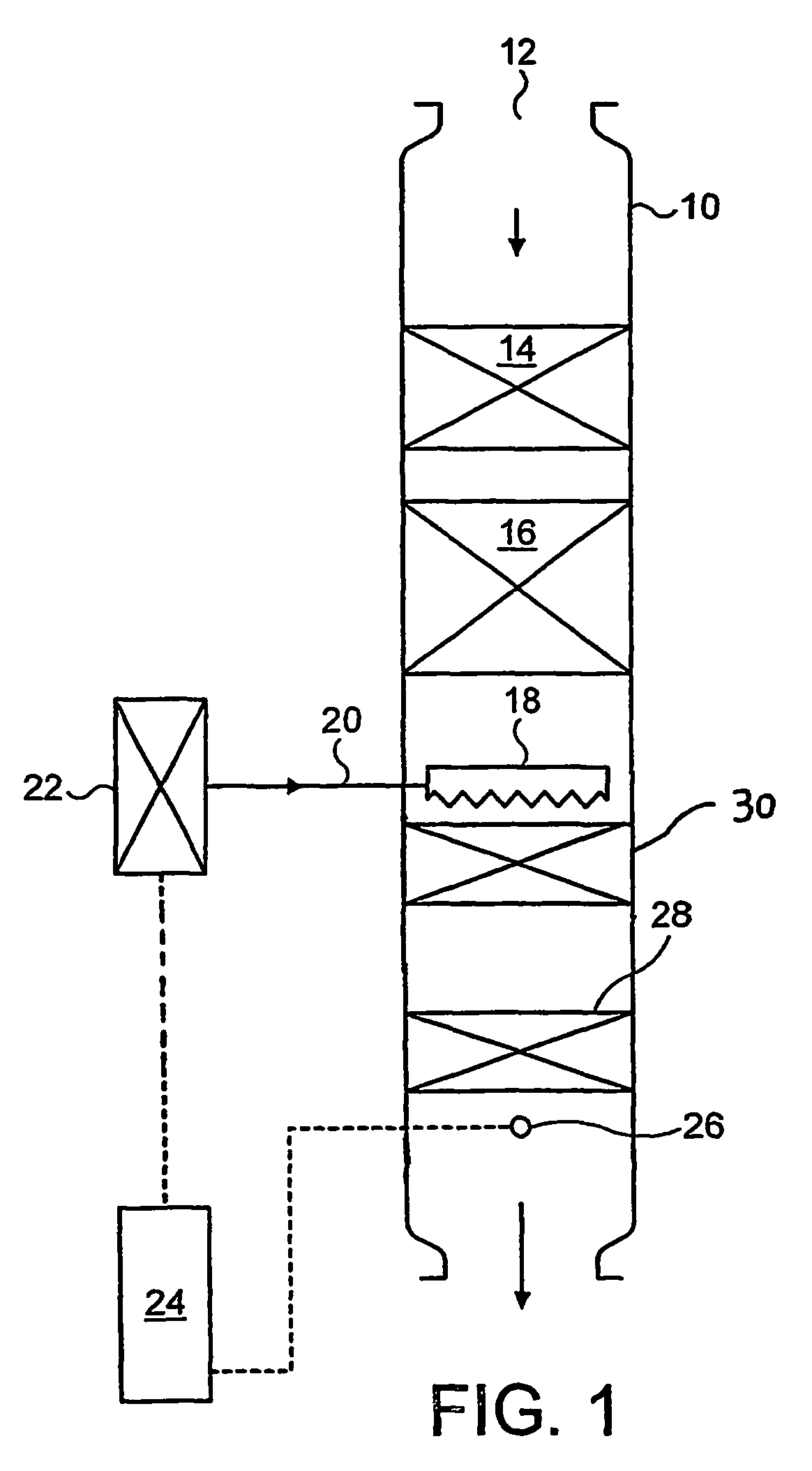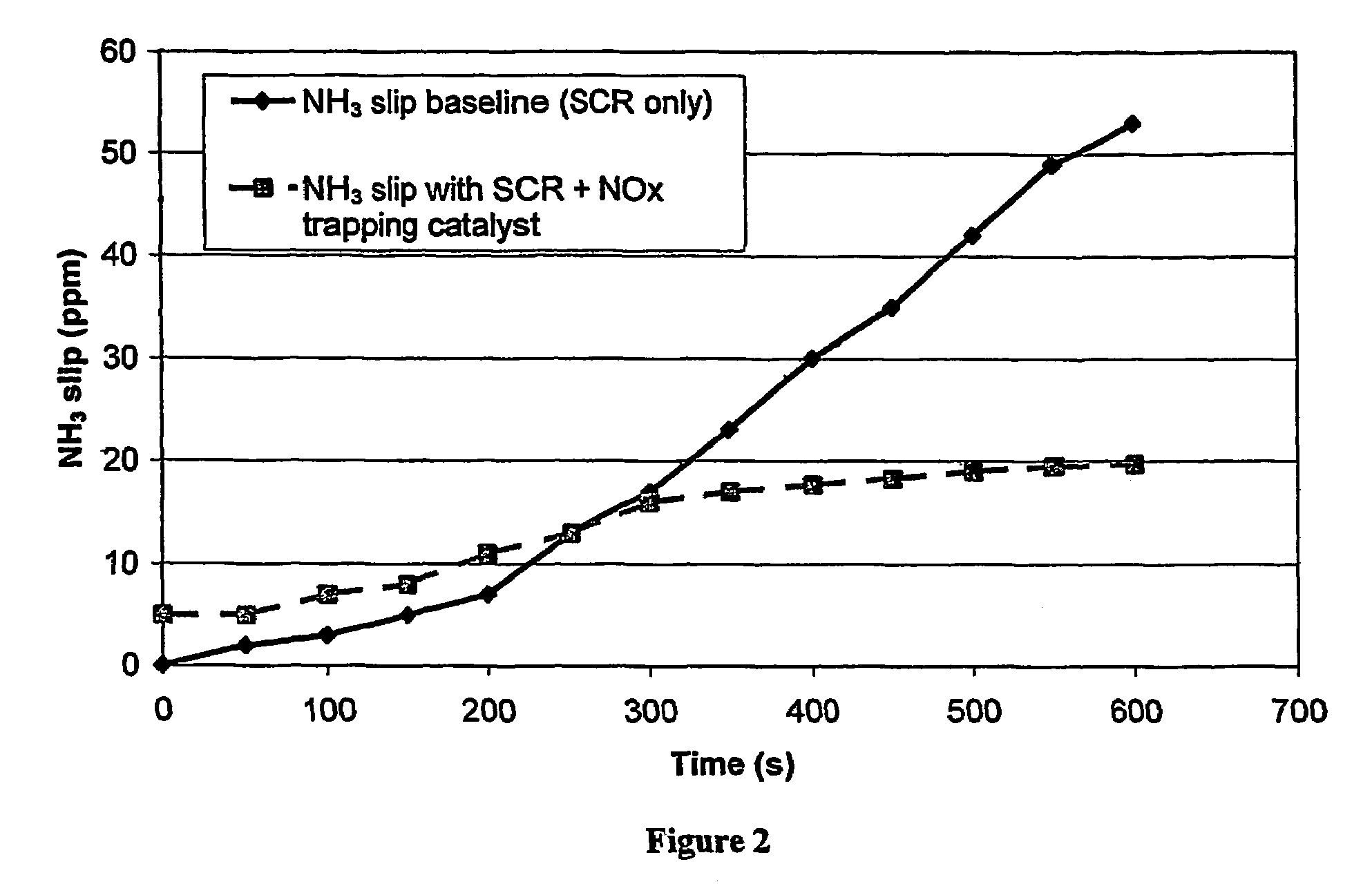Exhaust system for lean burn IC engines
a technology of exhaust system and internal combustion engine, which is applied in the direction of machines/engines, electrical control, separation processes, etc., can solve the problems of not all urea hydrolysed in such arrangements, secondary emissions of non-selective reactions with oxygen, and increased pm emissions on tests, so as to prevent the substantial exhaustion of nox-specific reactants from the atmospher
- Summary
- Abstract
- Description
- Claims
- Application Information
AI Technical Summary
Benefits of technology
Problems solved by technology
Method used
Image
Examples
example
[0072]A cordierite monolith (5.66 inch diameter (14.4 cm), 6 inch (15.24 cm) long, 400 cells per square inch (62.0 cells cm−2) with 6 thousandths of an inch (0.15 mm) thick walls) was coated with a washcoat consisting of gamma alumina (surface area 120 m2 g−1) in water made by slurrying sufficient solid in de-ionised water to give a solids content of 45%. The slurry was poured onto the face and down the channels of the ceramic monolith. Excess slurry was removed from the channels by compressed air. The water was then removed from the washcoat by drying in a hot air flow (150° C.). The dry coated monolith was then calcined at 500° C. for an hour. The total washcoat loading on the coated monolith was 2.5 g in−3 (152.6 g l−1). The coated monolith was then immersed in a platinum tetra-ammine solution for five minutes, removed, and excess solution removed by suction. The monolith was then dried in a hot air flow (150° C.) and calcined at 500° C. for an hour. The concentration of solution...
PUM
| Property | Measurement | Unit |
|---|---|---|
| Temperature | aaaaa | aaaaa |
| Temperature | aaaaa | aaaaa |
| Temperature | aaaaa | aaaaa |
Abstract
Description
Claims
Application Information
 Login to View More
Login to View More - R&D
- Intellectual Property
- Life Sciences
- Materials
- Tech Scout
- Unparalleled Data Quality
- Higher Quality Content
- 60% Fewer Hallucinations
Browse by: Latest US Patents, China's latest patents, Technical Efficacy Thesaurus, Application Domain, Technology Topic, Popular Technical Reports.
© 2025 PatSnap. All rights reserved.Legal|Privacy policy|Modern Slavery Act Transparency Statement|Sitemap|About US| Contact US: help@patsnap.com



